
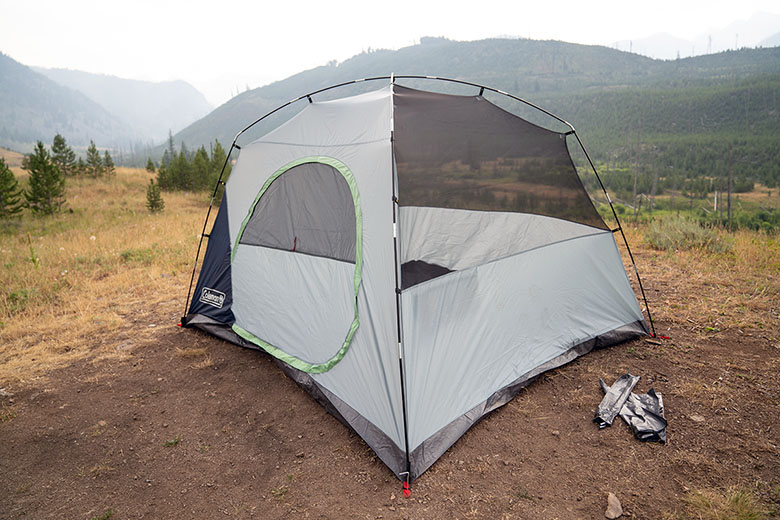
Switchback Travel (Nick Mott)


Switchback Travel (Nick Mott)
Price: $150
Floor area: 85 sq. ft.
Peak height: 72 in.
Weight: 16 lb. 0 oz.
Capacities: 2P, 4P, 6P, 8P, 10P, 12P
What we like: Hard-to-beat combination of price and livability; fully serviceable for fair-weather campers who get out occasionally.
What we don’t: Middling build quality, subpar weather protection, and only one door.
See the Coleman Skydome 6P
With more than a century of experience under their belt, perhaps no brand is more synonymous with camping on a budget than Coleman. With a lineup of tents that cost hundreds of dollars less than the competition, we were curious how their spacious and thrifty Skydome 6 stacks up in the modern market. At only $150 full price—and often available for less—the tent is competitively spacious, very quick and easy to set up, and perfectly passable for occasional use in favorable conditions. That said, Coleman did have to make some notable sacrifices to keep costs low, including cheaper materials and flimsier components than pricier designs. Below we break down our experiences with the Skydome 6. To see how it measures up to the competition, check out our article on the best camping tents.
Setting up the Coleman Skydome 6P for the first time, I was immediately struck by the tent’s spaciousness. At the highest point, it stands 6 feet (72 in.) tall on the dot, with pre-bent poles that do a good job maximizing headroom throughout the interior (Coleman claims a 20% boost in headroom compared to traditional dome-style tents). It’s a similar story with floor area, which measures 10 feet long by 8 feet 6 inches wide, totaling 85 square feet of usable space that easily accommodates queen-size air mattresses side by side. In practice, the tent has a very open and airy feel with plenty of room for multiple campers to move around, change clothes, and even stretch out. My only livability-related complaint is that the Skydome only includes a single door, which can make entering and exiting the tent a pretty clunky experience. To minimize middle-of-the-night gymnastics (especially with a tent of this size and capacity), I much prefer a two-person design.
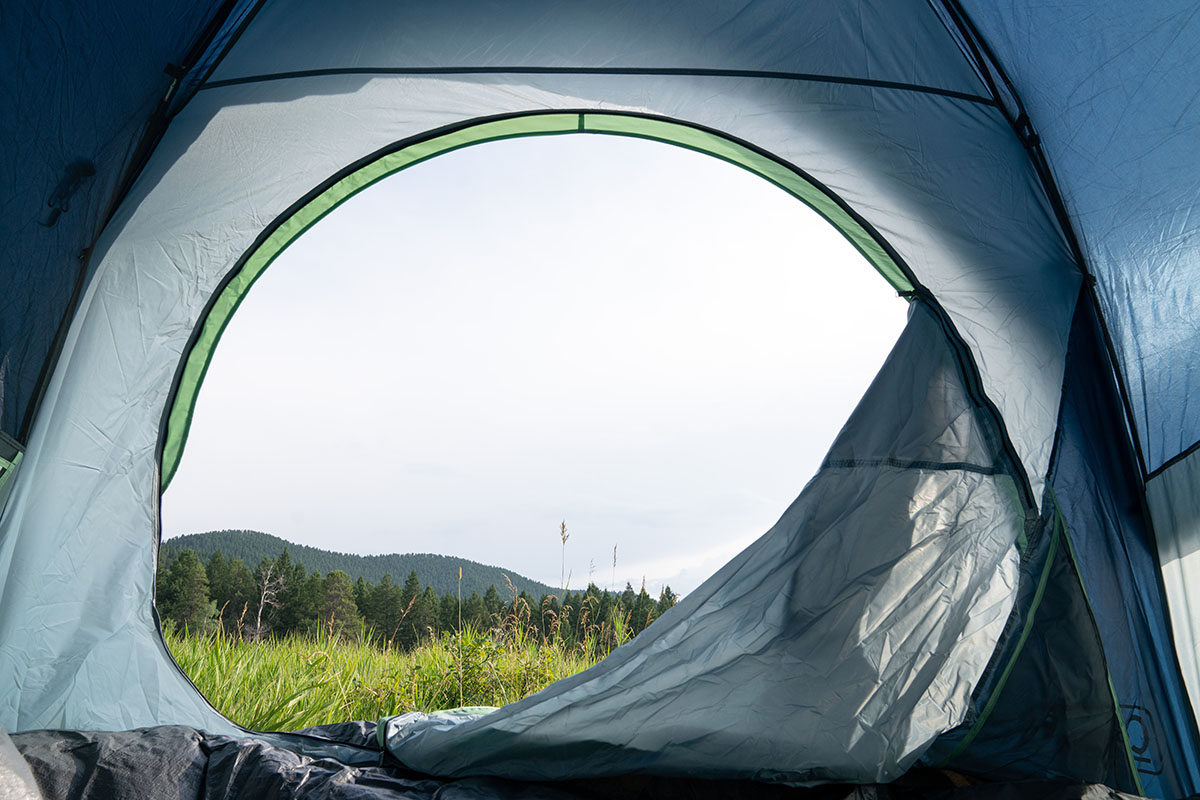
Given the Coleman Skydome’s wallet-friendly price tag, I didn’t expect any miracles in terms of weather protection. My biggest knock against the tent is its partial-coverage rainfly, which leaves most of the door and bottom exposed to the elements. In testing, this led to a bit of blowing rain sneaking its way inside. On the bright side, Coleman did outfit the tent with a tall bathtub floor, inverted seams, and welded corners—dubbed the brand’s WeatherTec system—to help seal out moisture at the base of the tent.
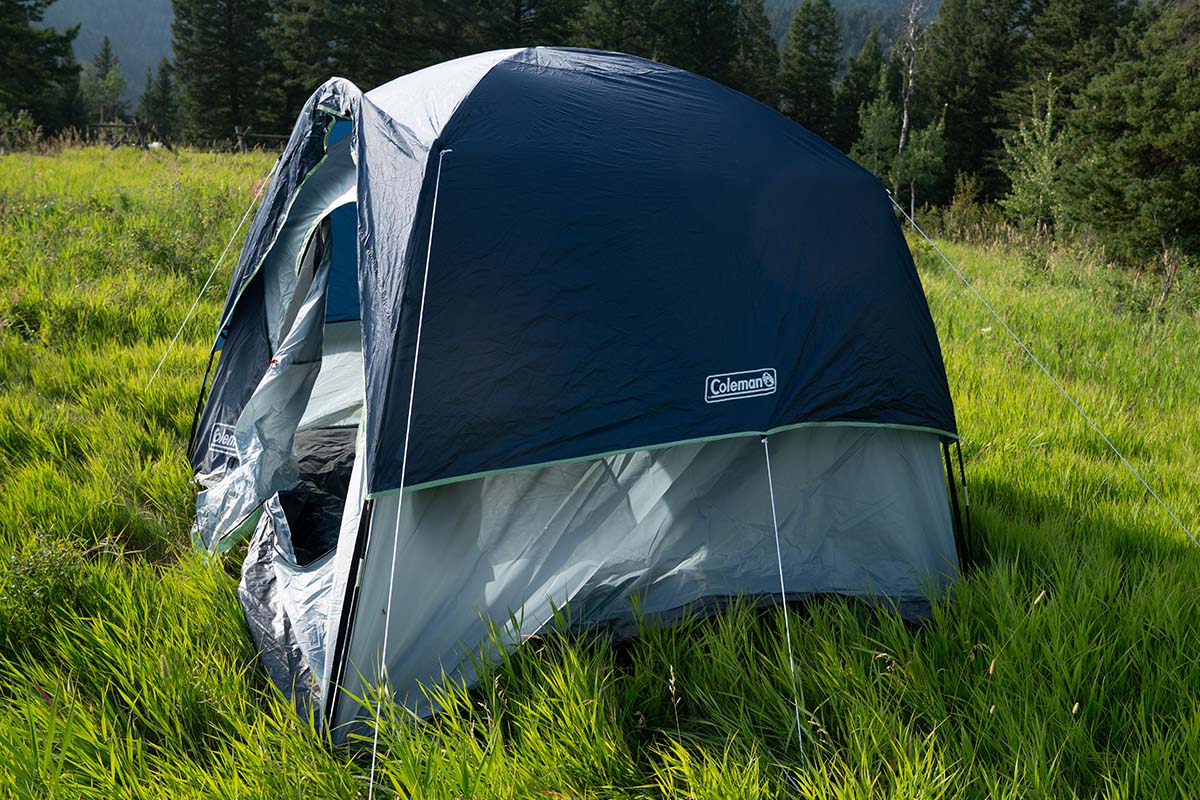
It’s a similar story with wind protection. For reference, Coleman advertises the Skydome 6 can withstand winds up to 35 miles per hour, which isn’t a very high number to begin with. And in testing, I found the tent fell well short of this estimate: While conditions were far from severe, the wind was blowing at the perfect angle to catch the tent’s sidewall like a sail. Even staked down, the Skydome folded in on itself, making it unusable—and nearly impossible to set up again until the storm passed. In sum, the Skydome strikes me as a fine option in very mild moisture and wind, but it wouldn’t be my first choice if extended rain or moderate to strong gusts are in the forecast.
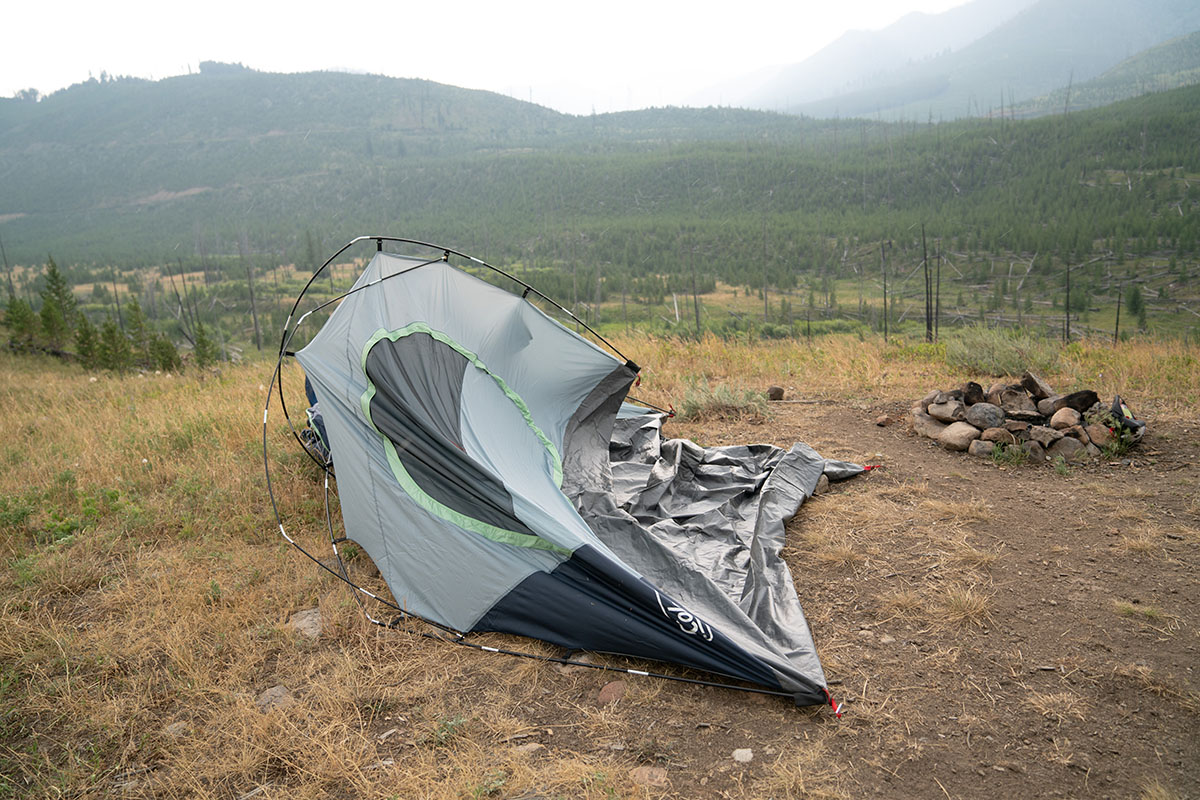
I’d categorize the Skydome’s ventilation as OK at best. The rainfly doesn’t feature any built-in vents for boosting airflow in inclement weather, which is another nod to the tent’s budget pricing. The good news is there’s a solid amount of mesh to keep air moving, and much of it is left exposed even with the rainfly on. In other words, while the partial-coverage fly offers limited protection in wet weather, it does help with ventilation and air circulation.
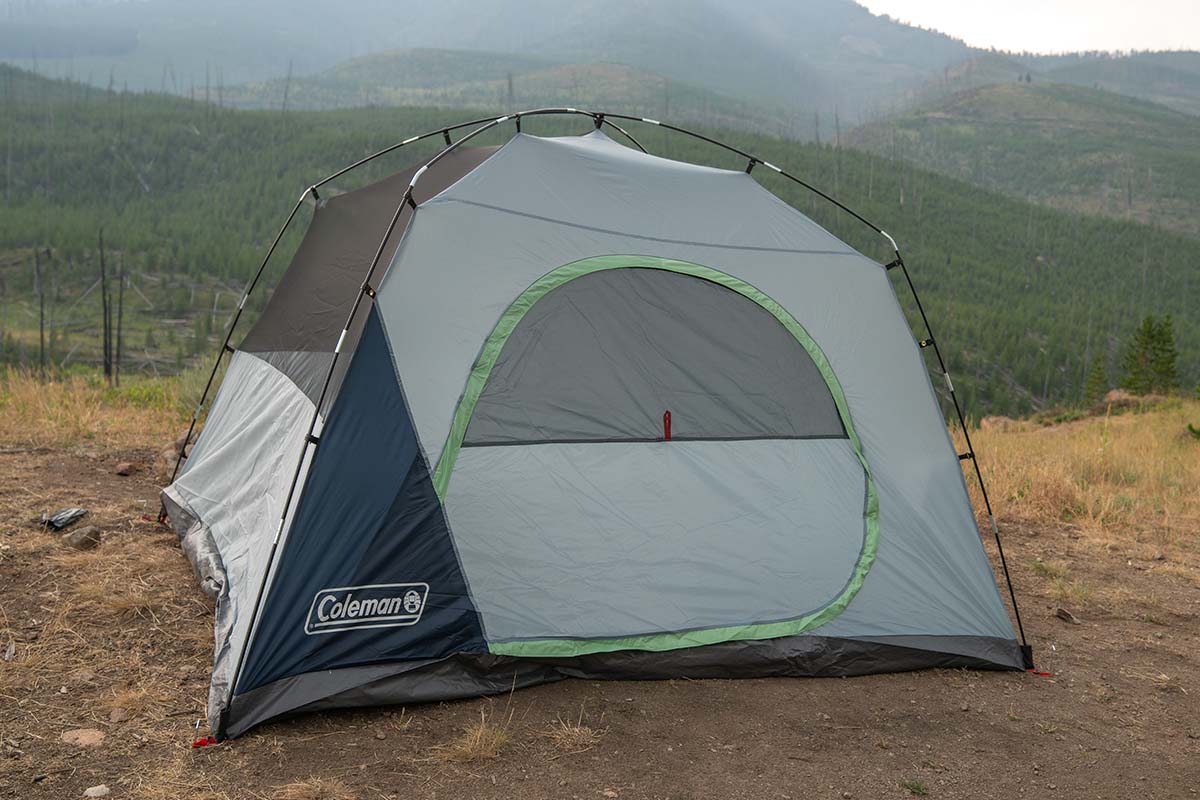
In short, the Skydome 6P is fairly limited on storage both inside and out. Starting with the former, you get a single rectangular pocket on one side that comprises four small mesh compartments, along with a triangular mesh pocket next to the door that houses the excess fabric when you want to secure the door out of the way. Coleman also includes a “gear loft” that you can attach for overhead storage. This eats into headroom, but I’ve found it useful for stashing items like a headlamp or book.
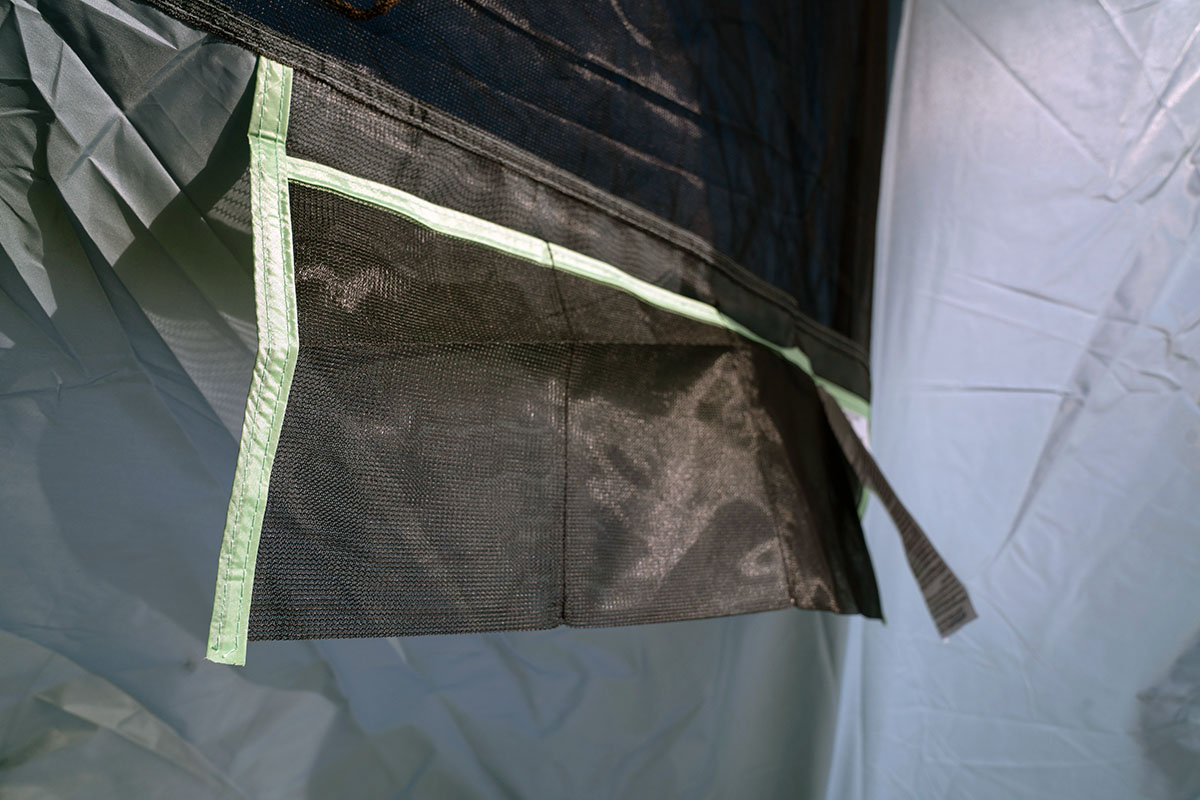
Outside, the tent’s partial-coverage rainfly results in no vestibule space. This is a major omission, in our opinion—we often utilize this area for protecting wet or dirty gear like hiking boots or a backpack. It’s worth noting that Coleman does sell the Skydome with a full-coverage rainfly and single vestibule that offers 40 square feet of protected storage space, but it’s a much steeper investment at $230.
Build quality is another area where it’s clear Coleman made some sacrifices to keep costs low. On the bright side, the Skydome's floor is made with thick, 1,000-denier (D) polyethylene, which feels noticeably burly and reminiscent of a ground tarp. In testing, I had no qualms about dragging the tent halfway across the campground to a better location. While much thinner, the sections of mesh also feel reasonably hardwearing and haven’t torn or snagged thus far despite relatively haphazard use.
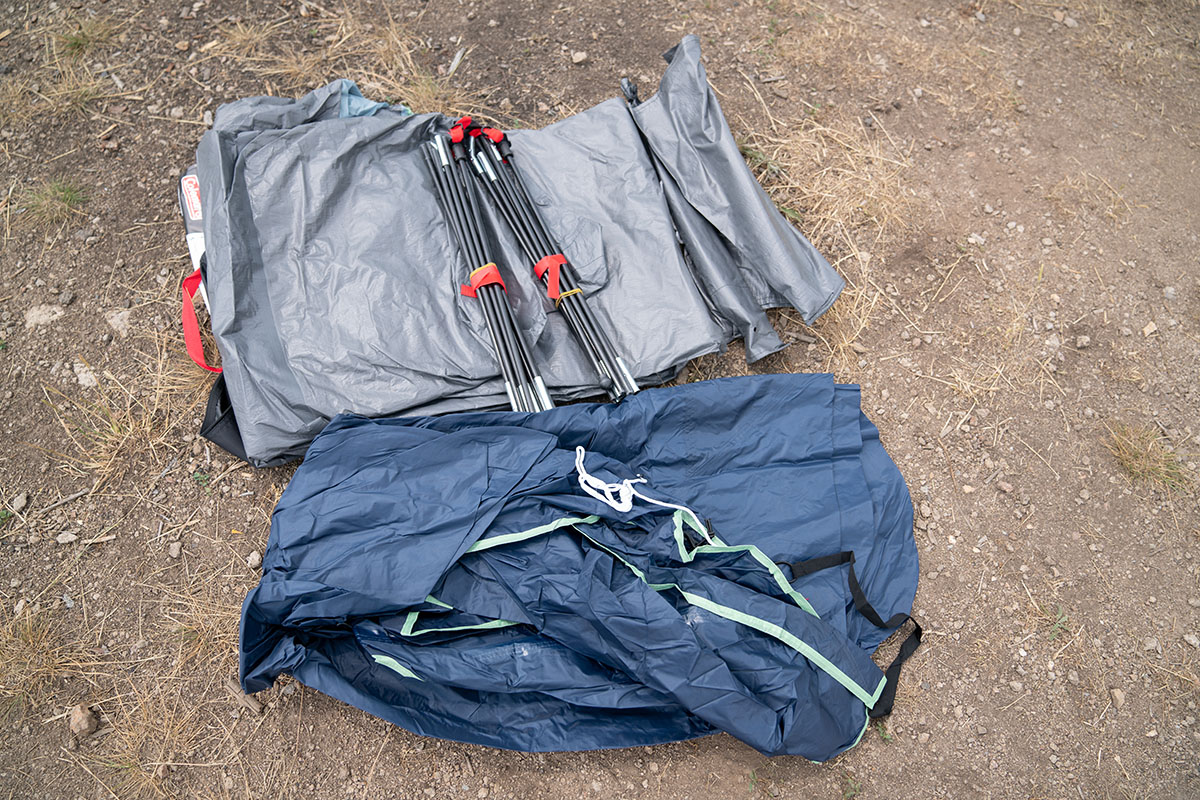
However, that’s where my praise ends. The tent body and rainfly are both 68D polyester, which has been adequate thus far to avoid snags and tears but isn’t anything to write home about. Coleman also opted for fiberglass poles, which are more susceptible to shattering under pressure than their aluminum counterparts. And there’s a lot of plastic in the design—most notably at the point where the poles attach to the tent—which doesn’t inspire confidence from a long-term durability standpoint. To be sure, the Skydome strikes me as perfectly serviceable for campers who get out a couple times a season, but committed outdoor-goers looking for a long-lasting camping tent should consider spending up for more premium materials and components.
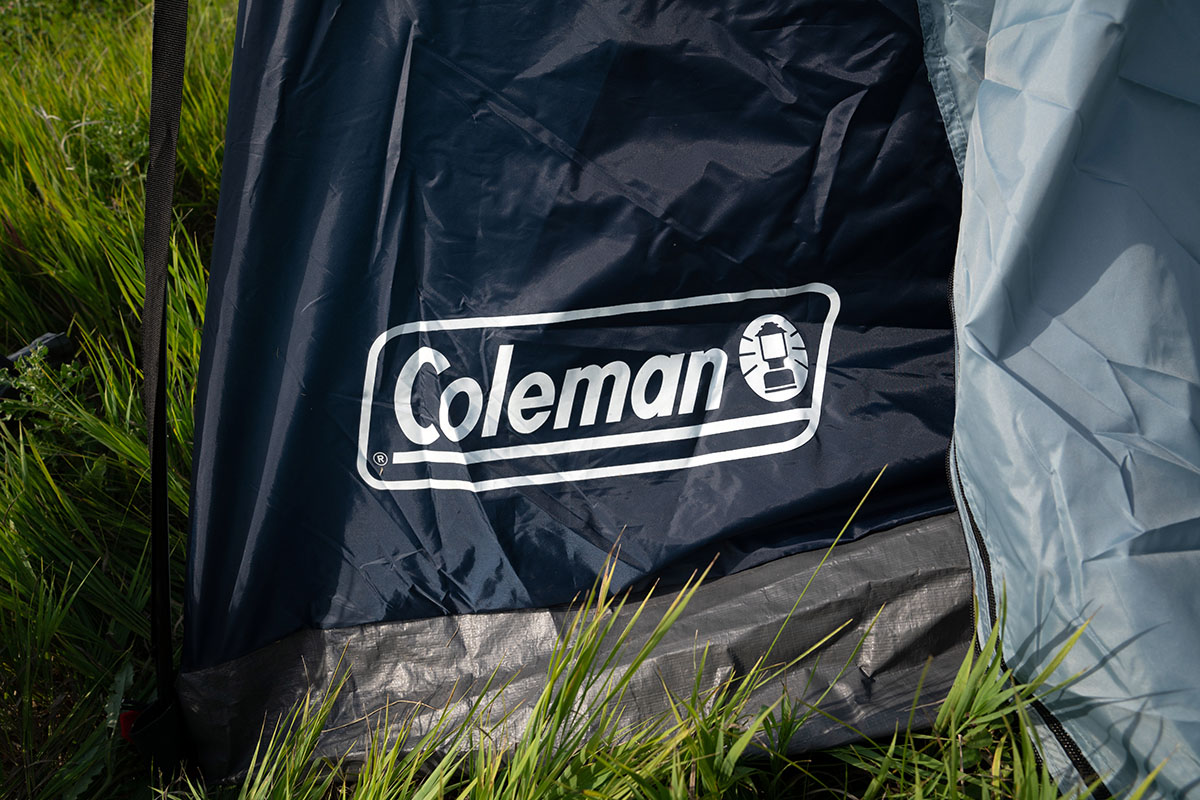
At 16 pounds all in, the Skydome won’t be mistaken for a lightweight backpacking tent but stacks up competitively among six-person camping designs. For reference, it undercuts our top-rated camping tent this year, The North Face Wawona 6, by around 5 pounds. You can go lighter without breaking the bank with Kelty’s similarly wallet-friendly Discovery Basecamp 6 (13 lb. 14 oz.), but most campers sticking close to their vehicles won’t be deterred by a few additional pounds. And it’s worth noting that pricier and heavier tents like the Wawona often feature higher-quality components and thicker materials, both of which add heft. In other words, there are some trade-offs to the Skydome’s relatively low weight.
In terms of packed size, the Coleman Skydome 6P stuffs down reasonably well for stashing in a full trunk or truck bed on gear-intensive weekends. However, I’m not a big fan of the packing process: Perplexingly, the tent comes tightly rolled in a rectangular box positioned inside the also-rectangular tent bag. After removing the tent from the box and pitching it for the first time, I found it nearly impossible to roll the tent tightly and precisely enough to fit back inside the included bag—similar to trying to fit a round peg into a square hole. It was so frustrating, in fact, that I ended up using another stuff sack to store the tent and throwing away the included storage bag. This is one area where a little more attention to detail could have made for a much more pleasant user experience.
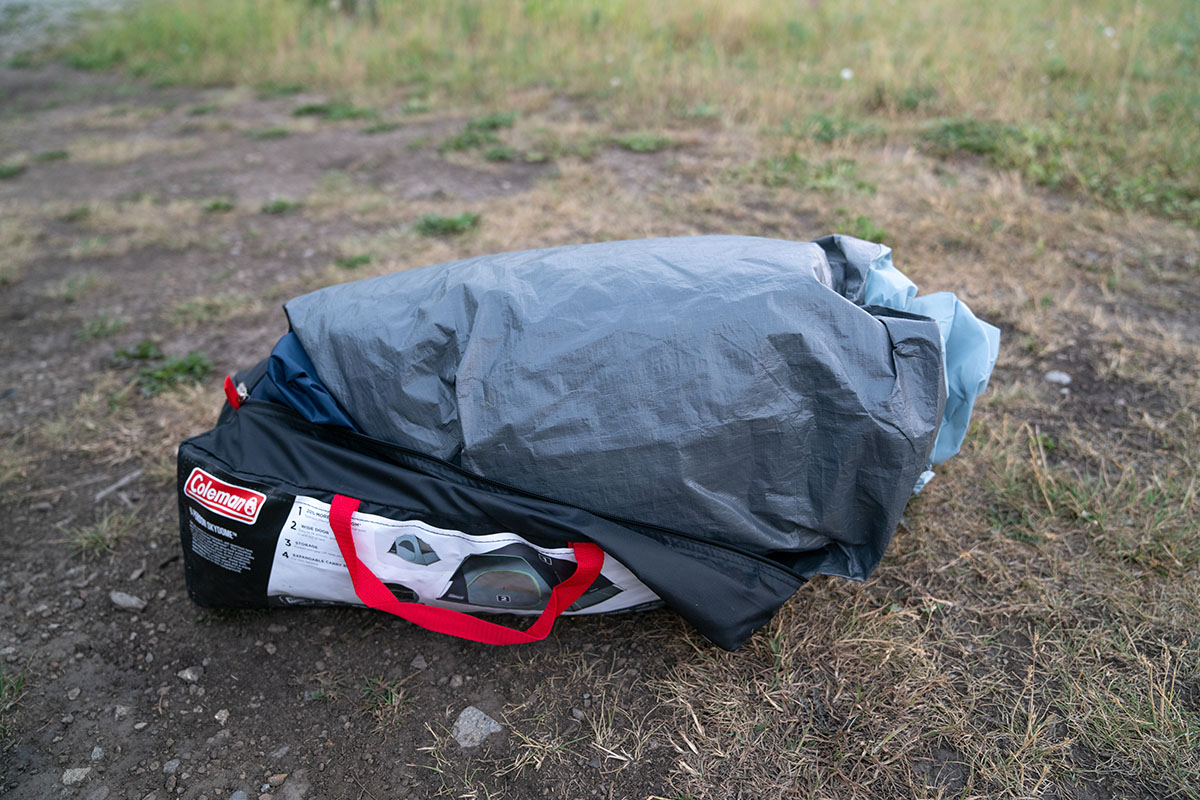
In addition to price, ease of setup is perhaps the Skydome’s biggest strong suit. Coleman states it should take about 5 minutes from start to finish, and I found that to be pretty accurate once I got the hang of the process. One big contributor is that the poles come pre-attached at one side, which saves a good amount of time. Once the tent is unfurled, simply extend the poles, insert the rounded ends into the front corner sleeves, and connect all the clips along the tent body. Securing the rainfly is as easy as draping it over the tent (make sure the pole sleeve is in front and the Coleman logos are on the side), connecting it to the tent body via the S-hooks at the corners, sliding the rainfly pole through the sleeve, and inserting the pole ends into the grommets at either side of the door. Finally, stake everything out and use the included guylines as necessary for stability. Taking down the tent is just a matter of reversing the process, although, as I mentioned above, the storage bag is oddly shaped and makes for a very tight squeeze.
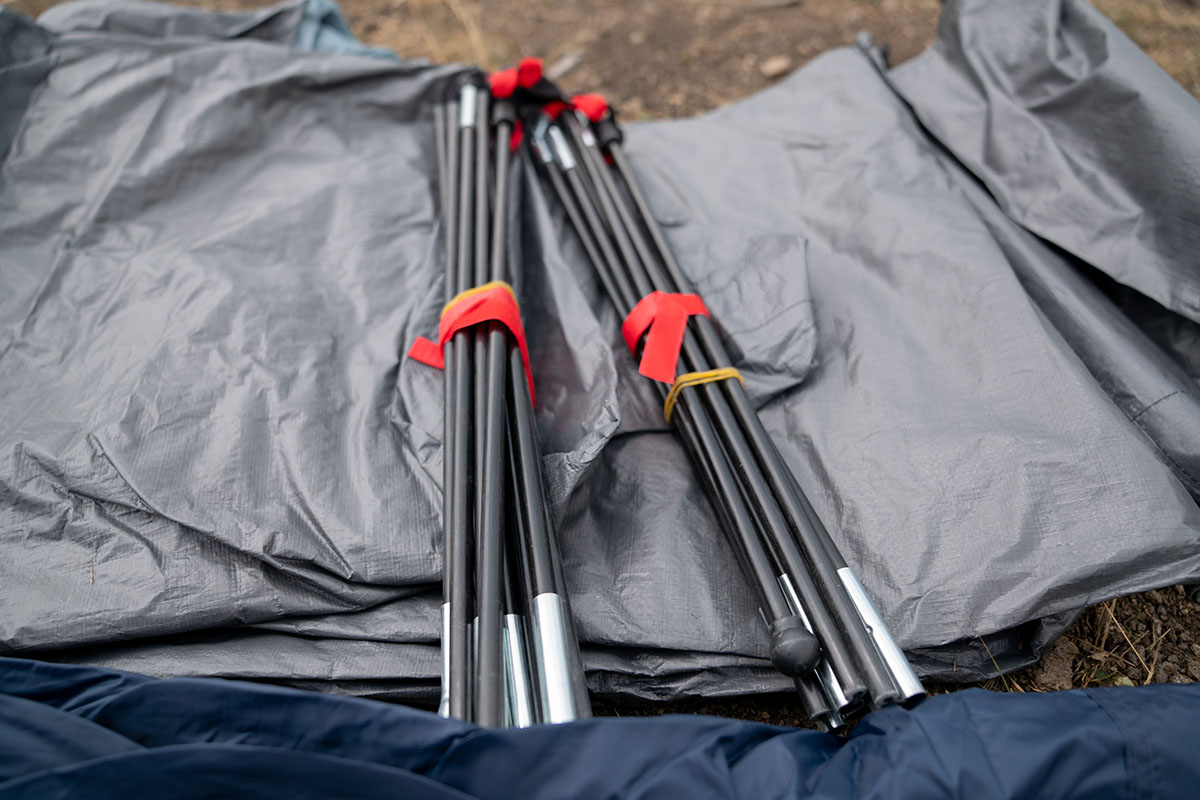
We tested the six-person Skydome for this review, but Coleman offers the design in several other capacities—from 2P all the way up to 12P—depending on your group size and space preferences. There are also Dark Room variations available in four-, six-, eight-, and 10-person versions, which are designed to block 90% of sunlight and reduce heat inside the tent. If you frequently camp in hot, exposed areas like the desert or simply prioritize getting a good night’s sleep outside, it may be worth spending slightly up for one of the Dark Room tents, which are otherwise largely identical to the standard version covered here. As we mentioned above, Coleman also offers the Skydome with a full-coverage rainfly and single vestibule (available in 2P, 4P, and 6P capacities), along with a few “Screen Room” models that boast a weatherproof vestibule that can be used as a hangout space, for gear storage, or as an additional sleeping area. Last but not least, there are four- and eight-person varieties available with built-in LED lights.
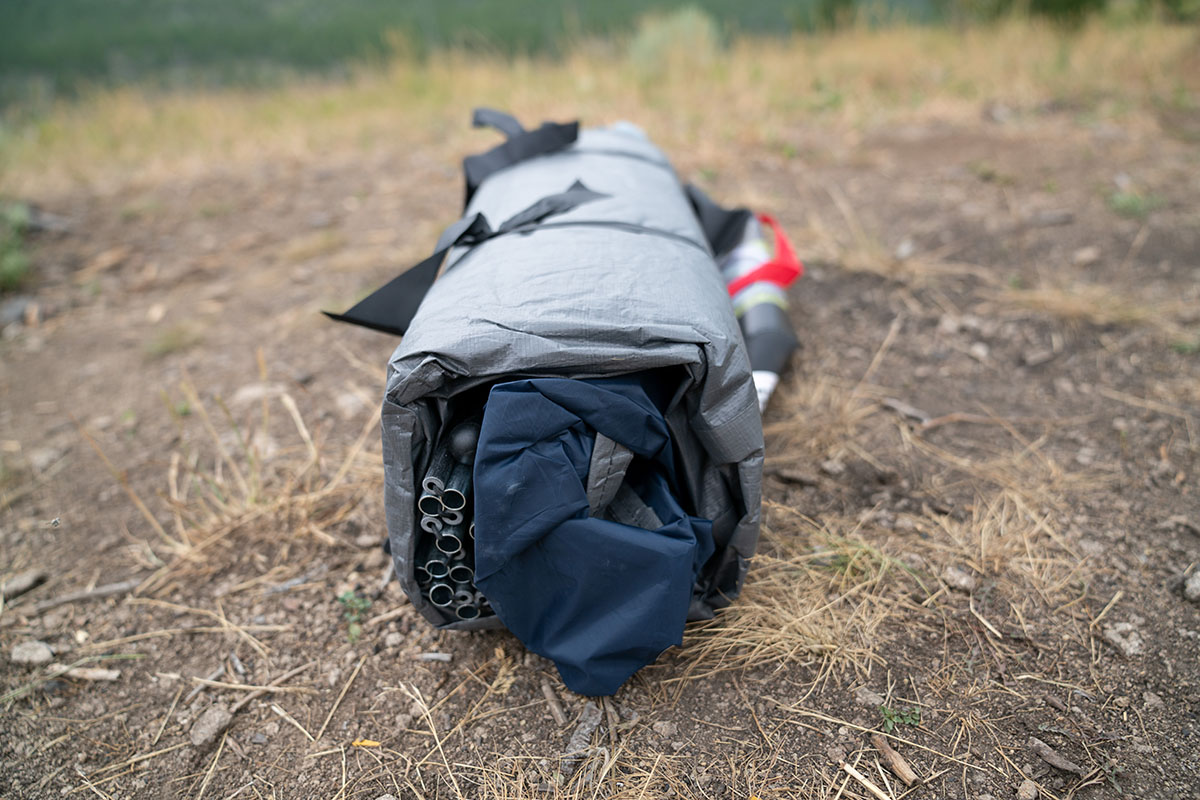
| Tent | Price | Floor | Height | Capacities | Weight | Rainfly | Doors |
|---|---|---|---|---|---|---|---|
| Coleman Skydome 6P | $150 | 85 sq. ft. | 72 in. | 2P - 12P | 16 lb. 0 oz. | Partial | 1 |
| Coleman Sundome 6P | $130 | 100 sq. ft. | 72 in. | 2P, 3P, 4P, 6P | 16 lb. 0 oz. | Partial | 1 |
| Kelty Discovery Basecamp 6 | $180 | 87.6 sq. ft. | 68 in. | 4P, 6P | 13 lb. 14.0 oz. | Partial | 1 |
| Kelty Bodie 6 | $200 | 89.2 sq. ft. | 77 in. | 4P, 6P | 15 lb. 13.0 oz. | Full | 1 |
| REI Co-op Campwell 4 | $229 | 60 sq. ft. | 62 in. | 4P | 11 lb. 14.3 oz. | Partial | 1 |
At $150, the Coleman Skydome stands out as an exceptional value among six-person camping tents. For another wallet-friendly design, we also like Coleman’s Sundome 6P, which retails for $20 less. While both tents feature the same peak height and very similar overall constructions, we prefer the Skydome’s more modern pole structure that does a better job opening up the interior (although the Sundome is technically larger by 15 sq. ft.). On the flip side, the Sundome’s rainfly offers a bit more coverage, although neither tent is particularly storm-worthy. In the end, both tents have their limitations but are fully passable for occasional use in fair weather, and a final decision may very well come down to which option you can pick up for less when you’re ready to buy.
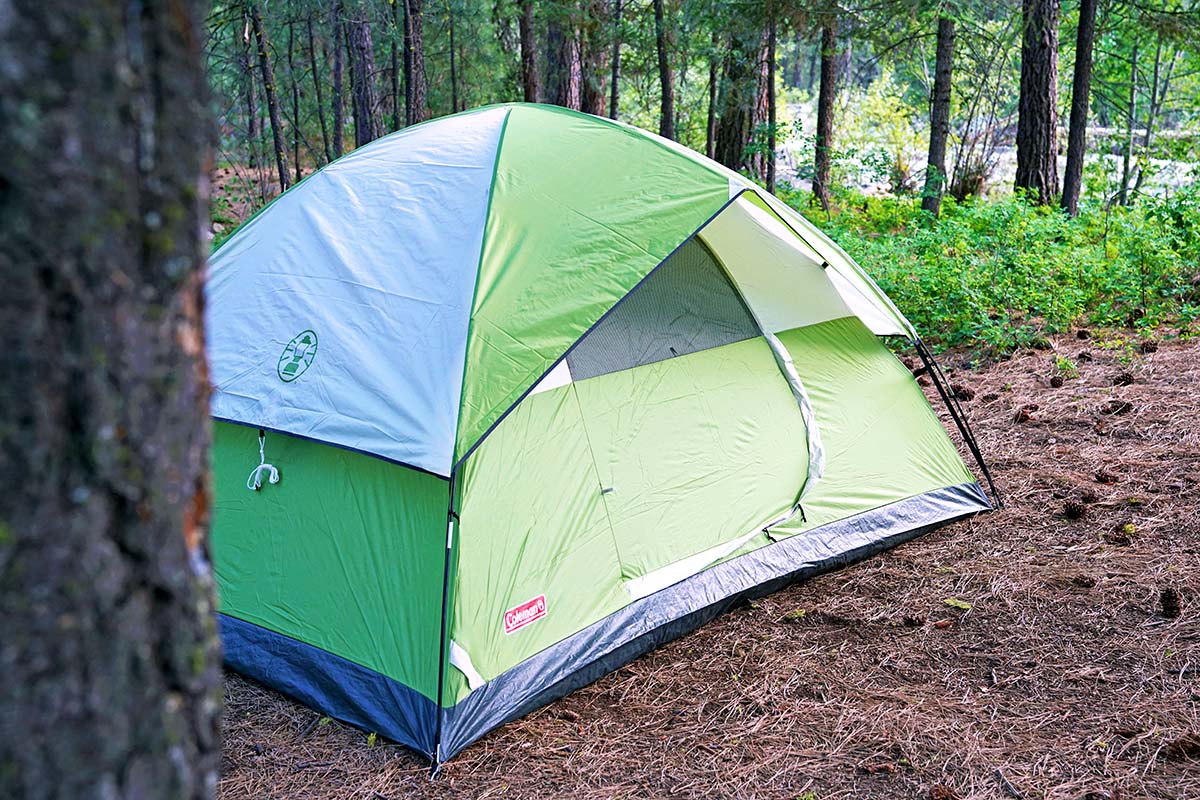
Moving away from Coleman’s lineup, Kelty is another consistent leader in the budget realm, and their $180 Discovery Basecamp 6 stacks up pretty competitively to the Skydome. Namely, both tents feature fiberglass (rather than aluminum) poles, boast partial-coverage rainflies that offer limited wet-weather protection (Kelty does offer a full-rainfly variation called the Discovery Element), and use 68D polyester for the canopy and fly. In parsing out the differences, the Discovery Basecamp offers slightly more floor area (87.6 sq. ft.) but features a much thinner floor material (68D vs. 1,000D for the Skydome) and has a 4-inch-shorter peak height. The Kelty also has a traditional dome shape, while the Coleman’s poles are pre-bent to maximize headroom. Dollar for dollar, we consider the taller and more durable Coleman to be the better all-around value.
Next up is another Kelty design to consider: their Bodie 6, which offers very well-rounded performance for the price. Right away, we’ll note that it’s a bigger investment than the Discovery Basecamp above at $200, but committed campers will likely find the upgrades well worth it. Specifically, the Bodie offers around 4 square feet of additional floor space than the Skydome, a 5-inch-taller peak height, and a full-coverage rainfly that’s much more confidence-inspiring in inclement weather. You also get a generously sized vestibule for gear storage, although we wish Kelty had included two doors for easier entry and exit. But overall, the Bodie strikes a nice middle ground between the budget-friendly Skydome and truly premium alternatives like The North Face’s Wawona 6, which is our top-rated camping tent this year but will run you a steep $500.
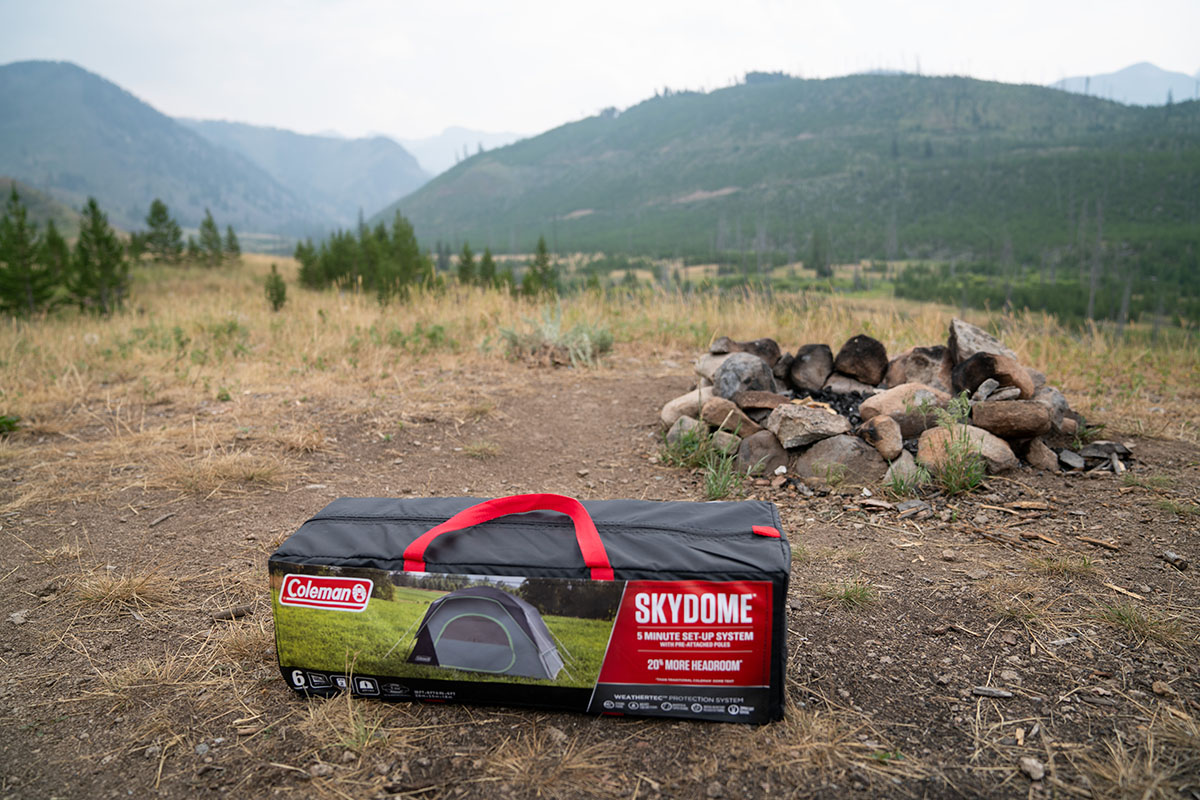
Finally, for smaller families, REI Co-op's Campwell 4 is a solid deal at $229. While notably less roomy with 60 square feet of floor area and a 62-inch peak height, the Campwell is the better-built option with higher-quality fabrics and components throughout. There’s also a large rear window for ventilation, although it’s not a high-end design by any means—you still get fiberglass poles that are more likely to shatter than aluminum, and the rainfly only covers the top of the tent. In the end, it’s hard to beat the Skydome’s combination of price and livability, giving it the overall edge for us.